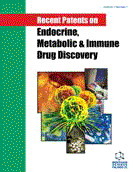Abstract
Lysophosphatidic acid (LPA) and its specific G-protein-coupled receptors have mitogen-like activities in cellular signal transduction. At the intracellular level, LPA is produced by phospholipase A1 (PLA1) or PLA2; at the extracellular level, LPA is produced by autotaxin/lysophospholipase D. Lipid phosphate phosphatases (LPPs) dephosphorylate LPA and thereby attenuate LPA signaling. Chronic kidney diseases (CKDs) and end-stage renal disease (ESRD) are significant public health issues throughout the world. In these conditions, there is a production and accumulation of transforming growth factor (TGF-β) and connective tissue growth factor (CTGF), leading to accumulation of extracellular matrix proteins and renal fibrosis. In addition, CKD risk factors such as diabetes mellitus, hypertension, dyslipidemia, and activation of the renin-angiotensin- aldosterone system can lead to overexpression of the TGF-β-CTGF-collagen/fibronectin axis and thereby accelerate formation of renal fibrosis. More than five LPA receptors (LPA1 - LPA5) have been identified and have been shown to be expressed in different tissues. LPA1 mediates lung and renal fibrosis following injury, and Ki16425 has been shown to be an antagonist of the LPA1 receptor and an attenuator of fibrosis formation. In this review, we provide a brief update on the concepts of renal fibrosis and the pathogenetic roles of the different LPA signaling pathways, discuss some recent patents on pharmaceuticals that disrupt these pathways, and introduce some pilot studies that have explored the therapeutic potentials of LPA receptor antagonists for management of renal fibrosis.
Keywords: Lysophosphatidic acid, Autotaxin, Renal fibrosis, TGF-β1, CTGF, S1P, Ki16425, Mesangial cell
 10
10





















